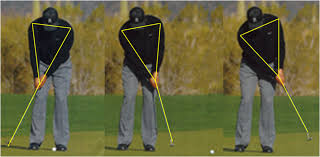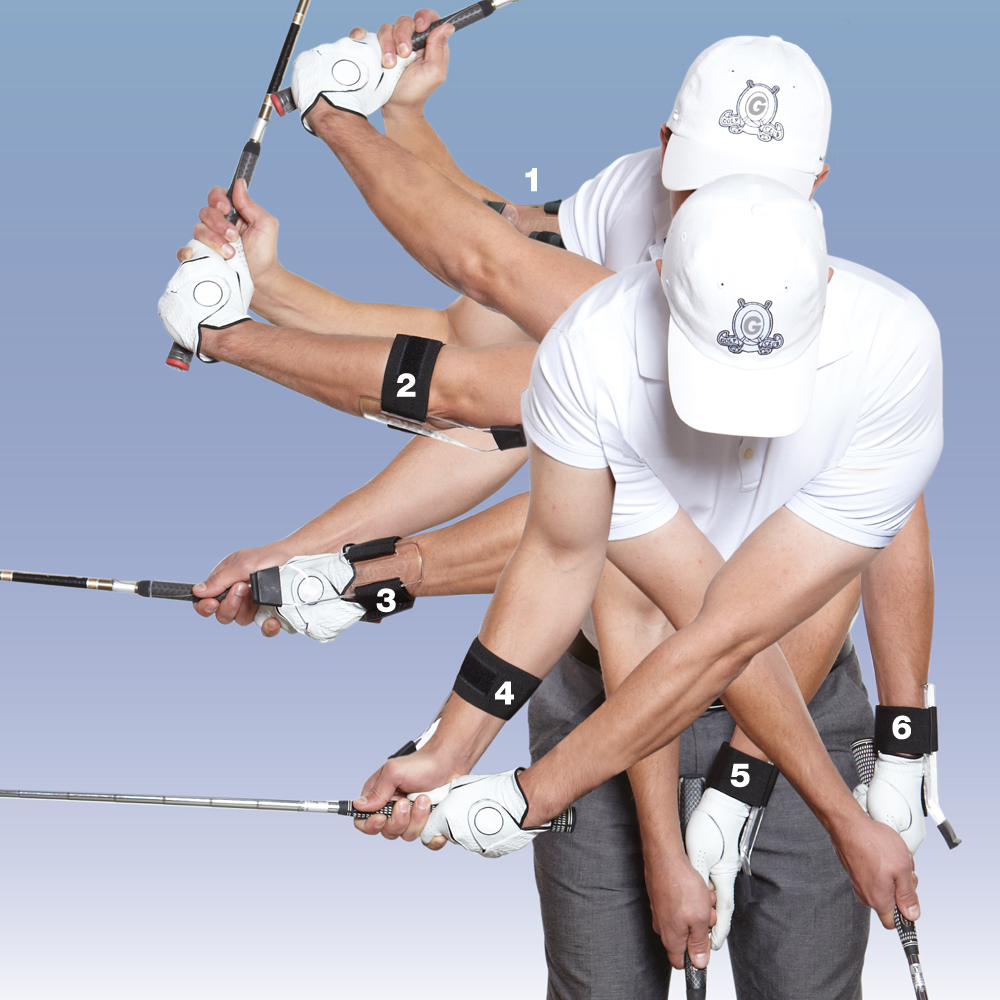I’m an engineer, so I approach all of my problems with an analytical mind. Success in golf is really dependent on emotion, feeling and tempo but putting is the only component of golf where an analytical process will save you a lot of grief. If you can’t see THE CORRECT SLOPE of the green, you will never improve your putting. Using your putter as a plumb-bob to see the direction of the break is an easy solution. Jason Rose, Rickie Fowler and many other pros do it and you should too.
To speed up your game, NEVER USE your putter as a plumb-bob to measure the slope of a green:
1/ If you can see an obvious direction of the slope of the green (don’t waste time for your foursome)
2/If there are 2 or more brakes in your planned putting line.
3/ If you have NOT calibrated your putter (to adjust for: dominant eye, putter head and tapered shaft.)
GRAVITY is the only perfect measuring tool that you can count on. Your ball is pulled by gravity to follow the slope of the green and your putter is a great measuring tool to tell you which way your putt will break. Its not legal to use a measuring aid like a weight on a string as a plumb-bob but you can use your putter as a plumb-bob the way many pros do.
Calibrate Your Putter: Every putter will hang at a different angle from your fingers because there are different shapes, weights and offsets for the head for every putter. Your dominant eye will also play tricks on your vision. Do this calibration test in your home by dangling your putter by 2 finger from the top of your grip. Line up the left or right side of your putter shaft (below the grip) with a straight floor tile grout line or board line on your floor (or door frame). Call this your TARGET LINE.
a. Turn the putting face plate to point at your TARGET LINE.
b. Close one eye to see the line-up of either side of your putter shaft with the TARGET LINE.
c. Then repeat with your other eye to determine which eye and which side of the putter shaft lines up best with your TARGET LINE. [i.e. I use my right eye and left side of my putter shaft.] Write down your findings. You could even mark it on your putter grip with an arrow.

Robert Allenby plays on the PGA Champions Tour. He is shown here using his putter as a Plumb-Bob to determine small breaks for putts that are difficult to read. You should too!
How to Read the Slope of a Green (BEWARE: This only applies to the slope directly under your feet as the slope may change along your target line.)
1/ Stand a few paces behind your ball directly in-line with the hole.
2/ Hold the end of your putter grip with 2 fingers, your arm in front of you and the putter face plate pointing at the hole (exactly the same as you did for the calibration).
3/ Line up the lower half of your putter shaft on your calibrated side of the shaft to line up with your ball.
4/ If the top end of the calibrated side of your putter shaft lines-up to the right of the hole, then you have a right to left breaking putt. If the shaft lines up to the left of the hole then you have a left to right breaking putt.
KEY CONCERN: Your putt will break more as it slows down near the hole, so measuring the direction of the slope FROM BEHIND THE HOLE AND FACING YOUR BALL is even more critical than the slope near your ball. Stand a few paces behind the hole, in-line with your ball, hang your putter down to line-up the bottom of the calibrated side of your putter shaft with the hole. If your ball can be seen on the left of your shaft, your grip is on the high side of your slope so your putt will break from left to right. If your ball lies to the right of your shaft, your putt will break from right to left. (Yes, it may be opposite from what you think as everything is reversed when you get back to your ball.)
Mini-Rule: (Calibrate your putter.) After you line-up the lower part of your shaft behind your ball or behind the hole, the top of your putter will ALWAYS be on the high side of the hole. (only takes 5 seconds to check) Your putt will ALWAYS break from the high side.
Practice with GOLFSTR+ to lock your wrist flat when you putt. Choose your target line (possibly by plumb-bobbing), take practice swings to choose the right swing for distance and then stare at your target point for 2 to 3 seconds (to lock your brain in for the distance and direction). Rock your shoulders to swing straight up your target line. Lock your eyes on a spot on the back-edge center-line of your ball during your swing and for 1 to 2 seconds after impact. You WILL make more putts. Buy your GOLFSTR+ today at www.golfstr.com
Save
Save
Save
Save
Save










